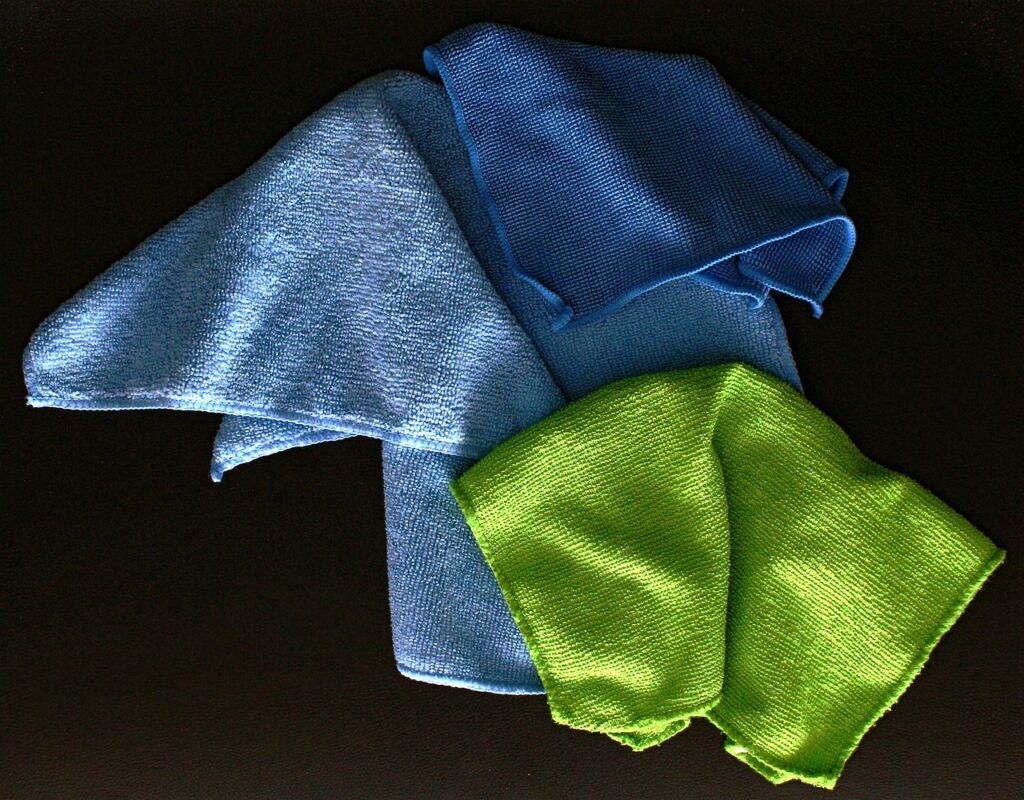Microfiber cloths have become a staple in households, loved for their versatility, efficiency, and eco-friendliness. These high-performance cleaning tools are more than just a trendy alternative to paper towels—they are a long-term investment that can save you money while helping you maintain a spotless home. Here’s everything you need to know about why microfibers are so effective, how to care for them, and how they stack up against disposable cleaning options.
Why Microfibers Are Great for Cleaning
- Superior Cleaning Power
Microfiber cloths are made of synthetic fibers, typically a blend of polyester and polyamide, that are split into ultra-fine strands. These strands are up to 200 times finer than a human hair, creating a dense fabric with superior cleaning capabilities. Microfibers excel at:
Trapping dirt and dust: The tiny fibers act like magnets, capturing debris rather than pushing it around.
Absorbing liquids: Microfiber can hold up to seven times its weight in water, making it ideal for spills.
Removing bacteria: Studies show microfiber cloths can remove up to 99% of bacteria with just water, thanks to their ability to grab and hold particles.
- Eco-Friendly and Cost-Effective
Unlike paper towels, which are single-use and contribute to waste, microfiber cloths are reusable. They last for hundreds of washes, reducing your need for disposable products. By replacing paper towels with microfiber, you can significantly lower your household waste and save money in the long run.
- Versatility
Microfiber cloths can be used for a wide range of cleaning tasks, including:
Dusting furniture
Cleaning windows and mirrors
Wiping down kitchen counters
Mopping floors (with microfiber mop heads)
Polishing stainless steel and other surfaces
How to Wash and Dry Microfiber Cloths
To keep your microfiber cloths in top condition and extend their lifespan, it’s important to clean them properly. Here’s a step-by-step guide:
Washing Microfiber Cloths
Sort Your Laundry: Wash microfiber cloths separately or with other non-linting items to prevent them from picking up debris.
Use a Gentle Detergent: Choose a mild, liquid detergent. Avoid fabric softeners, bleach, or detergents with added scents or oils, as these can clog the fibers and reduce effectiveness.
Select the Right Water Temperature: Wash in warm water (not hot) to loosen dirt and maintain the integrity of the fibers.
Avoid Overloading the Machine: Allow the cloths to move freely so they can be thoroughly cleaned.
Drying Microfiber Cloths
Air-Dry or Use Low Heat: High heat can damage microfiber, so air-dry the cloths or use a low-heat setting on your dryer.
Skip Dryer Sheets: Like fabric softeners, dryer sheets can coat the fibers and reduce their cleaning efficiency.
Shake Them Out: After drying, give the cloths a quick shake to fluff up the fibers and keep them soft.
Saving Money with Microfiber
The upfront cost of microfiber cloths may seem higher than a roll of paper towels, but the long-term savings are undeniable. Here’s why:
Durability: A single microfiber cloth can replace hundreds of paper towels, saving you money and reducing waste.
Multi-Use: Microfiber works on virtually any surface, eliminating the need for specialized cleaning products or tools.
Water-Only Cleaning: Microfiber often cleans effectively with just water, reducing your reliance on chemical cleaners.
For example, if your household uses 2-3 rolls of paper towels per week at $1.50 per roll, that’s about $234 annually. A set of high-quality microfiber cloths costing $20-$30 can last years, offering substantial savings.
Tips for Getting the Most Out of Microfiber Cloths
Designate Specific Cloths for Different Tasks: Use color-coded cloths for different areas (e.g., blue for windows, yellow for kitchen counters) to prevent cross-contamination.
Rinse Frequently: During cleaning, rinse the cloths often to avoid spreading dirt or debris.
Replace When Needed: While microfiber cloths are durable, they will eventually wear out. Replace them when they no longer feel soft or lose their cleaning effectiveness.
Final Thoughts
Microfiber cloths are a powerful, eco-friendly alternative to disposable paper towels and traditional cleaning tools. With proper care, they’ll last for years, saving you money and reducing your environmental footprint. By making the switch to microfiber, you’re not just choosing a better way to clean—you’re investing in a more sustainable future for your home and the planet.

